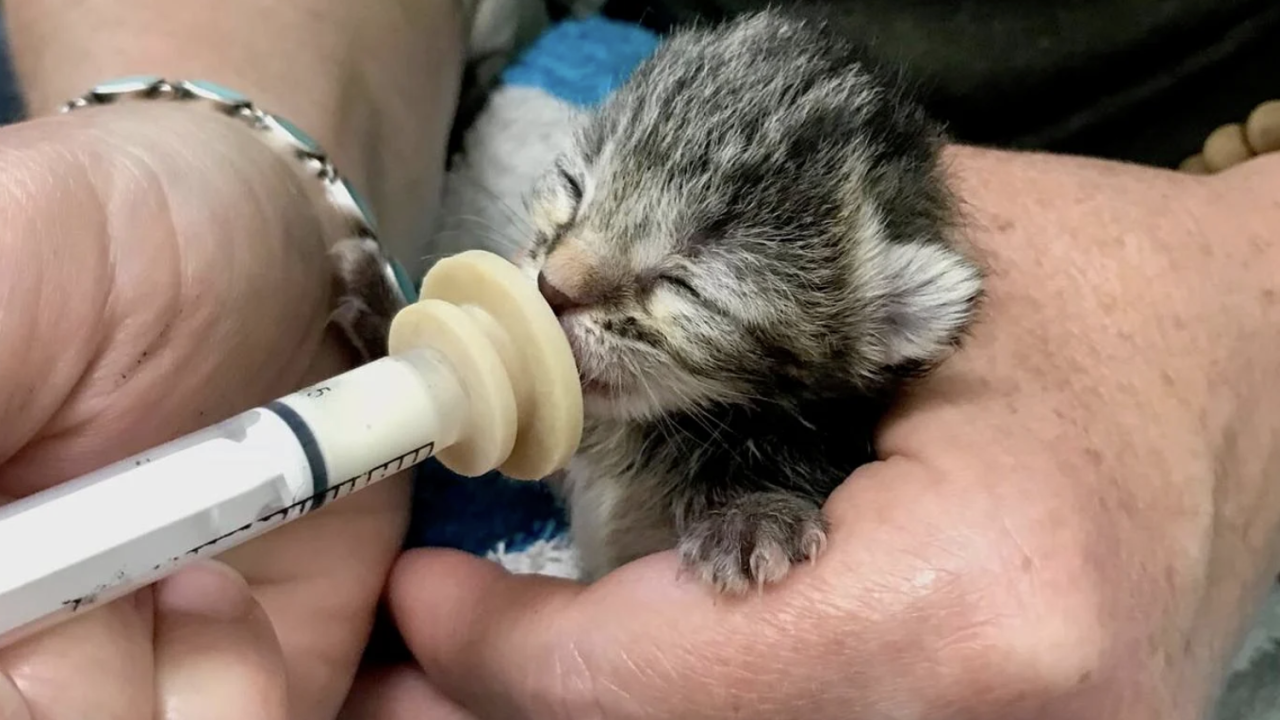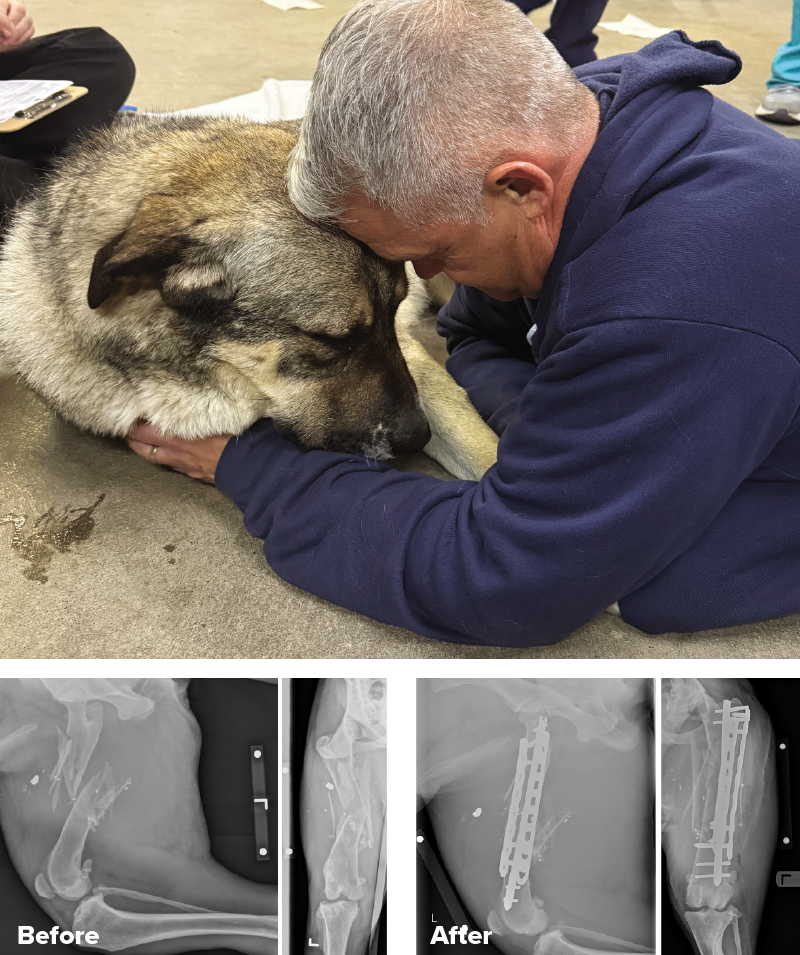
News Bites
It Takes a Village
The Orphan Kitten Project (OKP) got a little love in a feature article for UC Davis Magazine that was picked up by University of California News. The nonprofit, veterinary-student-run club has been saving tiny feline lives since 1988.
OKP takes in rescued kittens needing this additional care because it is a burden that traditional animal shelters aren’t equipped to handle. Depending on their age, neonates (under 4 weeks of age) may need to be syringe or bottle fed every two hours. Without mother cats, these vulnerable kittens face malnutrition, illness and death.
Kittens are given a complete physical exam by the project coordinators and then fostered by veterinary students or members of the community who bottle-raise them in their own homes. The club has about 20 to 30 active fosters at any given time. The kittens are weaned, vaccinated, FeLV tested, spayed or neutered, and dewormed before they are put up for adoption, usually by 10-12 weeks of age.
As one of the largest organizations on campus, the club is supported by an extensive network of volunteers, from surgery and adoption coordinators to veterinary advisors at the on-campus William R. Pritchard Veterinary Medical Teaching Hospital.
“It takes a village because we're running an entire rescue,” said Hannah Rogers, a third year DVM student and co-president of OKP.
While the project partners with veterinary hospitals, medical bills still pose a substantial challenge. Adoption fees go completely into medical costs.

Dog Given Golden Ticket on Life
Lola, a golden retriever, faced a grim cancer diagnosis at age nine. An aggressive form of oral melanoma had spread to her lungs. Even with chemotherapy or radiation therapy at that point, the median survival time is around two months. Her last hope was a clinical trial at UC Davis to try an inhaled immunotherapy in conjunction with intravenous doxorubicin, a common chemotherapy drug.
Dr. Robert Rebhun, a veterinary oncologist, has been working through multiple rounds of clinical trials for several years to better understand canine cancer and develop reliable treatments. These collaborative studies with the UC Davis Comprehensive Cancer Center aim to improve cancer treatment not only for animals, but people too.
Initially, Lola didn’t seem to respond to treatment and failed out of the trial. A month later, follow-up X-rays showed clear lungs and no sign of the multiple cancerous tumors that had been present. That was two years ago. Lola’s family will celebrate her 11th birthday in October.
“We are trying to figure out what makes Lola different, what makes her part of that 10% that responded,” Rebhun said. “If we can understand why we are seeing that response, hopefully we can either, one, predict the dogs that will respond, or two, adjust other things.”
When Lola was just a puppy, she helped her “mom” Allison Roth heal from her own life-threatening tumor, for which she was treated at the Mayo Clinic in Minnesota.
“Through my multiple brain surgeries, she was always by my side,” Roth said. “When it came time for her cancer treatments, I was thrilled that she would be treated at UC Davis—what I would call the ‘Mayo Clinic for dogs.’ I wanted to take care of her the same way she took care of me.”
For now, Lola’s family is enjoying every minute with her on daily walks, at the beach and simply snuggling on the couch. They’ve also enjoyed her day in the spotlight as a media darling on CBS News and other outlets.
The clinical trial that extended Lola’s life was sponsored by the National Cancer Institute at the National Institutes of Health—an example of the critical importance of federal research funding.

Above: Volunteer Kelly O'Keefe comforts Olympus at the Covelo Clinic. Following treatment for a gunshot wound, the dog was adopted by O'Keefe's parents. Courtesy image.
Compassion and Teamwork Provide a Second Chance
Olympus, an approximately 2-year-old male Anatolian shepherd, picked the right house in Covelo, California to approach for help after he was shot in the back left leg. The good Samaritan who lived there knew of a free community veterinary clinic happening nearby that weekend.
Covelo Clinic—part of the school’s Accessible Veterinary Care— takes place three times a year and is run entirely with volunteers. From veterinarians, DVM students, veterinary technicians/assistants, undergraduate students, and community members, everyone comes together to help the remote Mendocino County’s residents and pets. Animals receive vaccinations, preventives, spay and neuter surgeries, and general health care.
Olympus needed surgical intervention for a broken femur, so he was transported to UC Davis veterinary hospital. After orthopedic surgery and rehabilitation provided by the UC Davis Fracture Program for Rescue Animals, Olympus was adopted by the parents of a Covelo Clinic volunteer and is now enjoying life on six acres with his new canine BFF. His heartwarming story was featured on ABC News and proved popular on social media channels.
Warning Signs of Cancer in Dogs
An estimated one in four dogs will be diagnosed with cancer in their lifetime, and half of dogs over the age of 10 will die from some form of the disease. Researchers suspect these cases are due to a variety of things including longer lifespans, environmental factors, selective breeding and improved diagnostic testing.
No matter the cause, early detection can improve your dog’s chances of surviving cancer and living a long, happy life. One of our veterinary oncologists, Dr. Robert Rebhun, was included in a HuffPost article to increase awareness of some of the most common warning signs of canine cancer.
- Odd behavior: This could include no longer asking for treats, sleeping more, or less enthusiasm about daily activities. Most cancers cause systemic inflammation and that can make your dog feel poorly.
- New lumps: Bumps and lumps are part of aging. Older dogs frequently develop benign skin lesions and fatty growths. New bumps that are firm, irregular in shape or quickly changing in size, texture or color could be cancerous and it’s best to get them checked out.
- Excessive thirst and urination: Some cancers increase calcium levels in the body, which can make your dog feel thirstier. Other types can impact kidneys or cause internal bleeding.
- Limping: Some dogs, particularly large and giant breeds, can develop bone or joint tumors in their legs. These may present as a progressive limp, reluctance to bear weight on a limb, or swelling.
- Unexplained weight loss or reduced appetite: Cancer can cause metabolic changes. These symptoms may indicate that a dog’s body is using more energy to fight off disease. Tumors in the digestive tract can also interfere with nutrient absorption.
While these common signs can also be related to other health conditions, the best thing you can do for your pet is to monitor changes in your dog’s behavior and health, and get them seen by a veterinarian if something seems off.

